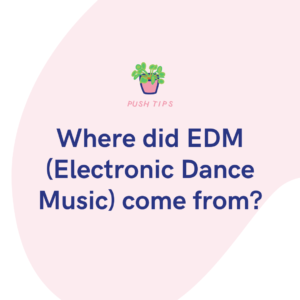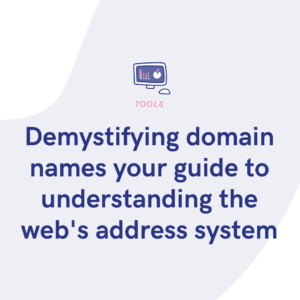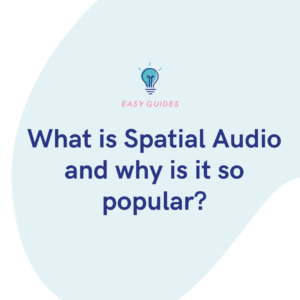
Copyright is notoriously boring and long-winded, but, it’s important you know the 101. We’ve put together a list of commonly used terms and definitions so you can up your knowledge game.
Copyright is the exclusive right that someone has over a piece of intellectual property. This property can be a composition, film, image, sound recording, an online video, painting; you name it. It helps the owner of the intellectual property protect against others copying or re-creating their work.
However, owners can decide to license their copyrighted work. Licenses allows others to re-use owned works, provided they follow certain rules and guidelines. Here is a list of the most common terms you’ll come across:
📛 Attribution required
Attribution is when you give credit to the original author when using their work. The author will often specify how they want to be credited in a license, or their ‘terms of use’.
When attributing, it’s important that you don’t suggest that the original author endorses you, your product or your brand.
©
This is the copyright symbol, and is used to designate copyright for most types of work. You will often see this symbol used alongside the year the copyrighted work was created, and the name of the copyright owner.
🎸 Musicians; you will often see this symbol when referring to the composition copyright (i.e. the owner of the underlying melody, lyrics and chords).
💲 Commercial use
With commercial use licenses, you can use works for commercial, profitable purposes. This means you can make money from using this work in your business, brand or project.
Here are some examples of what would constitute commercial use:
- Using imagery on socials to promote a new release that’s live on streaming stores.
- Using video content in a YouTube video that you’re making ad revenue from.
- Utilising sound FX in a podcast show that you’re selling.
- Using vocal acapellas in a new song you’re releasing on download stores.
🎨 Creative commons
Creative Commons is a non-profit organisation that offer creators a variety of different licenses, such as:
- Attribution License – you can use and transform works for both commercial and non-commercial purposes as long as you give appropriate credit.
- Attribution-NonCommercial License – you can use and transform works for non-commercial purposes only and you must give appropriate credit.
- Attribution-NoDerivatives License – you can use works for both commercial and non-commercial purposes as long as you give appropriate credit but you cannot remix, transform of build upon the material.
👬 Derivative work
A derivate work is a piece of work that has been heavily based on, or derived from another work. The following are examples of derived works:
- Remixes of any form
- A painting of a photograph
- Cover songs
- Films or productions based on books/novels.
- Collages
- Images with touch-ups and/or filters applied
💰 For profit use
For profit use essentially means the same as commercial use. You can use content listed as ‘for profit’ to make money with, or to use to promote your business and/or products.
For example, you can distribute backing tracks that are listed as for profit to streaming stores to earn royalties from. However, make sure you check each backing track’s terms and conditions; they’ll commonly require transformation or adaptation before being allowed to be distributed.
🤝 License
A license is a form of contract that allows someone to use, distribute and/or adapt a work. Licenses do not transfer copyright, and instead represents an agreement between the owner of the work and the person wanting to use that work.
💸 Non-commercial use
Works that state they are for non-commercial use cannot be used to make money, or used to promote your businesses and/or products.
I.e. you cannot use non-commercial imagery or sounds in your music if you intend to put it on streaming/download stores.
❌ Not for profit
Not For Profit is essentially the same as non-commercial use; you cannot use works to make money, or to promote your business and/or products.
Not for profit works can be used in a wide range of possibilities, including:
- Education contexts
- Artistic projects
- For fun/personal projects
- Content that will not be marketed, promoted or sold.
℗
This is the phonograph symbol. It is used to refer to the copyright of a sound recording and is rarely used for anything outside of music copyright.
🌎 Public domain
Public domain content has no copyright. This is because the owner has either passed, or has decided to deliberately place their content into the public domain (thus removing their copyright). Public domain content can be used by almost anyone for personal and commercial purposes.
👛 Royalties
Royalties are payments to copyright owners for the use of their content or works. They are typically paid each time the content is used, copied or distributed. Royalty rates and terms are typically set out in a license.
💳 Royalty-free
Royalty free means you can use works without needing to pay royalties each time the work is used. However, some royalty free content might require a paid license or have restrictions for use.
Trademark™
A trademark is a way for brands/businesses to help consumers identify their products from products made by other brands/businesses. You can trademark a logo, symbol, word or set of words so that it belongs to your business or brand. It guarantees your business exclusive use of the item you have copyrighted.
Famous trademarks include the names and logos of Apple, Coca-Cola McDonalds and Nike.
🌊 Watermark
A watermark is a visual or audible ‘stamp’ placed on a piece of work.
📸 In images, watermarked will often take the form of an overlaid logo on top of the work.
🎧 Watermarks in music take the form of an audible tag or speech sample, often at the beginning of end of the song. They are most used by beat-leasers to aid recognisability or determine if the content has been paid for or not.





